PrestaShop Documentation v1.5
Template installation
If you don't want to spend your time installing the template, don't hesitate to order installation service using our live-chat.
Import theme
Note: this method does not provide sample data installation.
Template preparation
Before you proceed, please make sure you have already downloaded the template and extracted the files from the template package.
When the files are extracted, you can proceed to uploading the template.
Installation
Log into your PrestaShop admin panel and navigate to Design -> Theme & Logo. At the top of the page click Add new theme button (1).

Click Add file button (1) in Import from your computer section. Navigate to previously unzipped template package and open themeinstallator folder.
Select your theme .zip file and click Save (2).

The uploading process will be started. You will see the message that the theme has been successfully uploaded. Your new theme preview will appear in the list of installed themes.
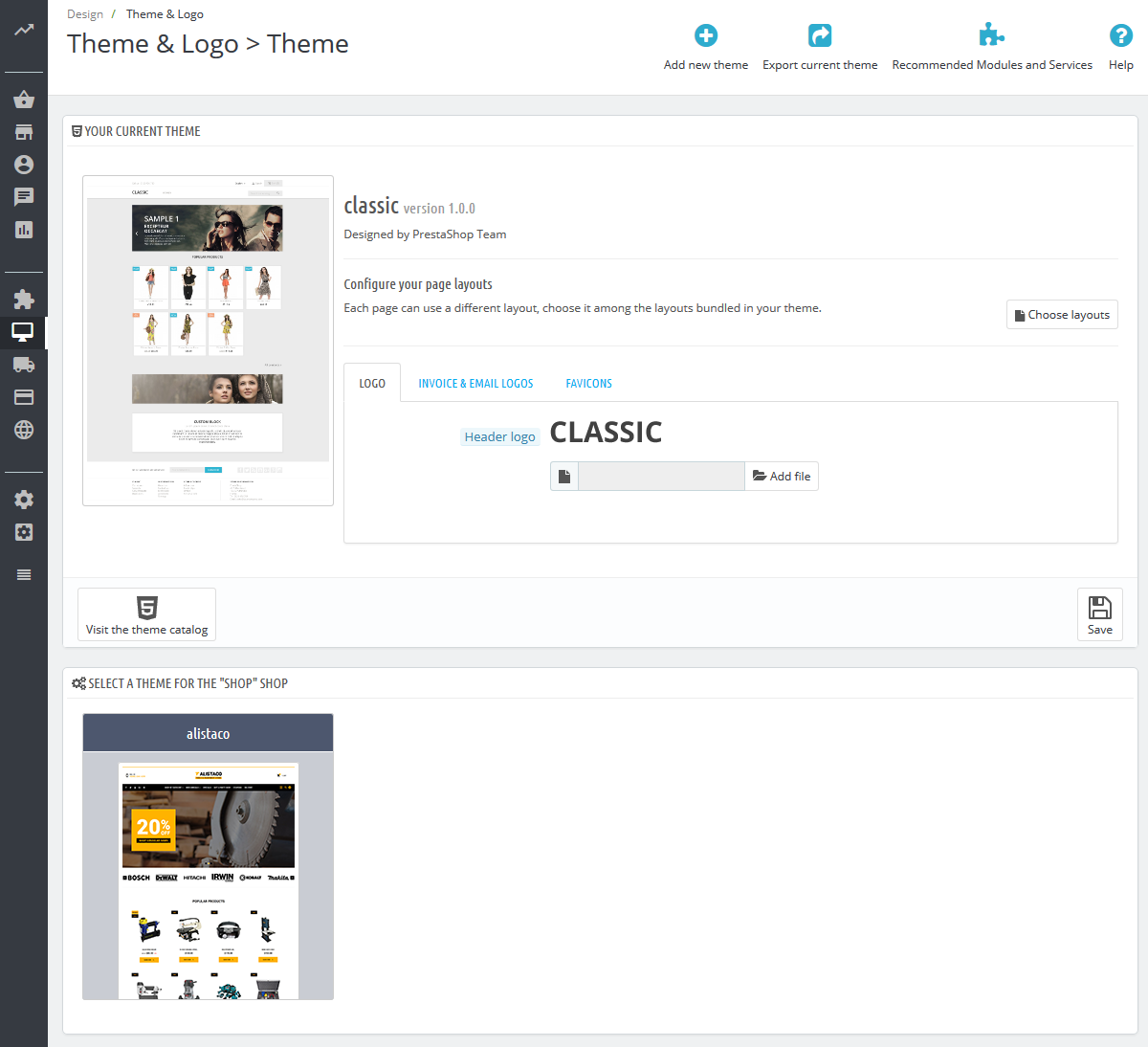
In order to activate the theme, hover the cursor over the theme preview icon and click Use this theme.
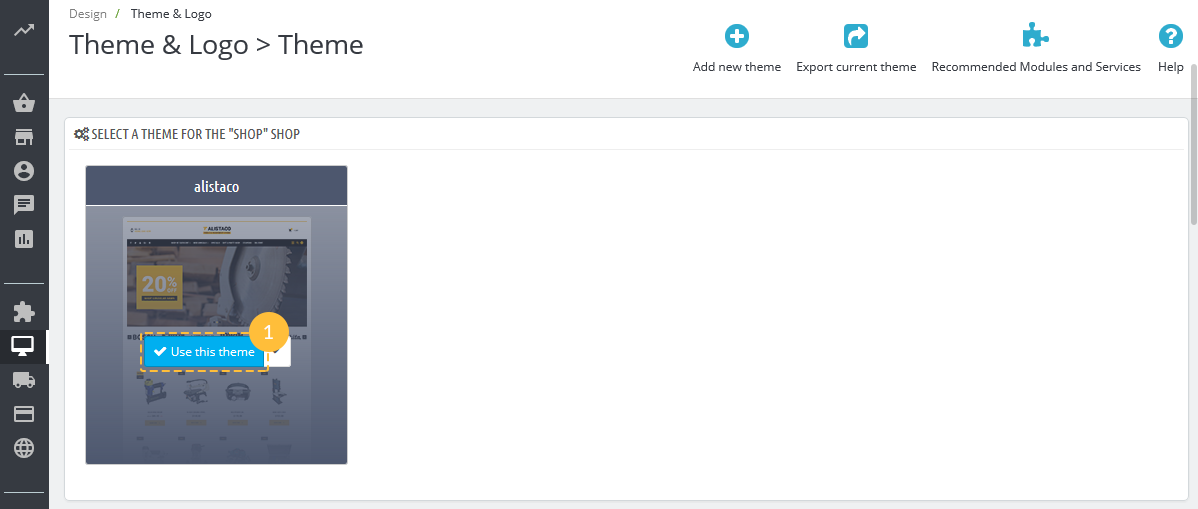
Automatic installation with demo data (Sample data installer)
If you don't want to spend your time installing the template, don't hesitate to order installation service using our live-chat.
To make your PrestaShop store appear the same as template live demo, you need to install sample data. It will contain all demo products, categories, modules and store settings.
If you use PrestaShop 1.7.6.x version - please download this -> sample data module version
If you use PrestaShop 1.7.7.x version - please download this -> sample data module version
Before proceeding to sample data import, you should check the following:
- Make sure your database prefix is ps_ for sample data to apply to the site You can check it in Advanced Parameters -> Information.
- Your server settings should meet Prestashop requirements, especially max_execution_time should be set to at least 300 on the server.
- PHP version should be 7.2 for the best performance. You can find all the recommended settings here.
- In Advanced Parameters > Performance set Debug mode to No.
In order to install sample data using the Sample data installer module, please follow instruction from the step 1 (Theme import) of this manual. Then in your store admin panel you'll see Sample data installer module.
Using this module you can easily install store sample data in few easy steps. Please do the following:
-
From the admin panel menu click "Install Demo Store" item.
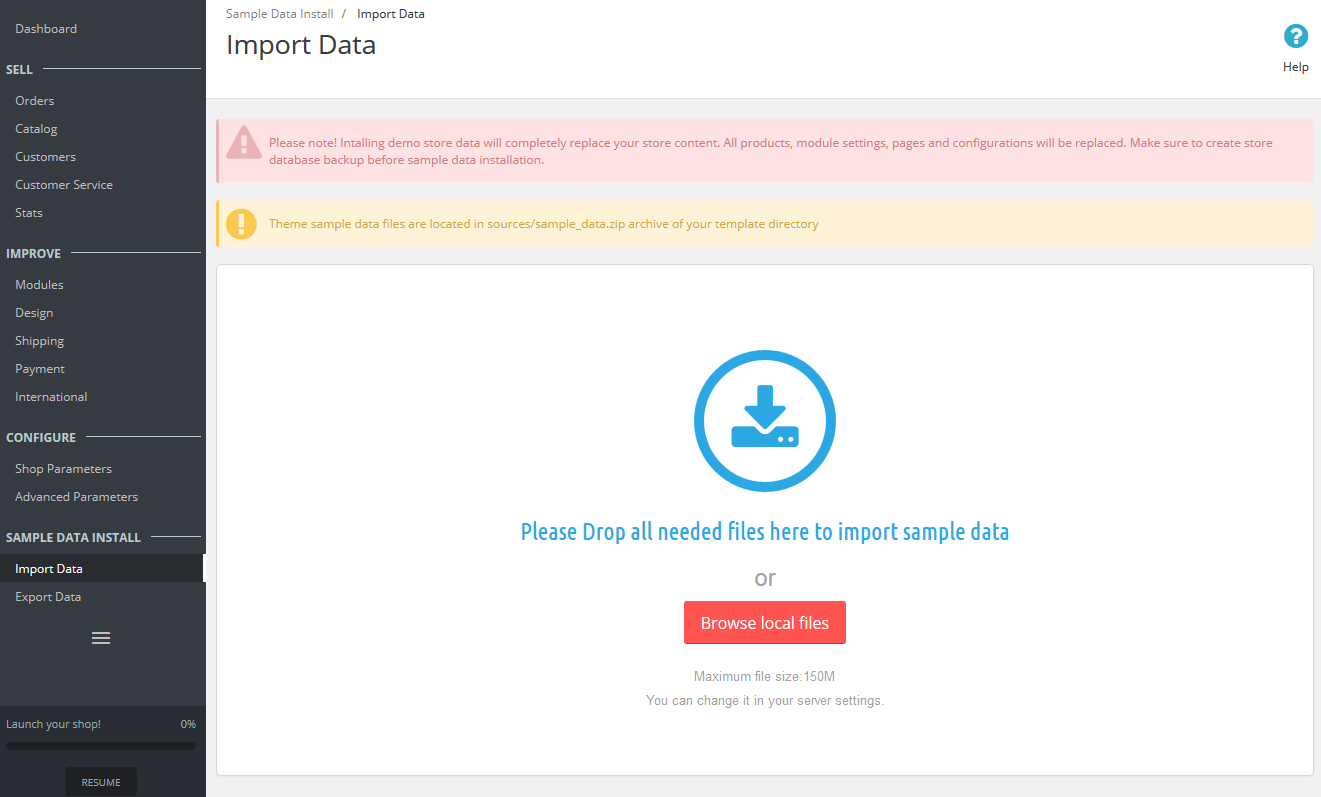
-
Select and upload sample data files from 'sample_data' directory of your template package. You can do this using the "Browse local files" button or dragging sample data files to the browser window.
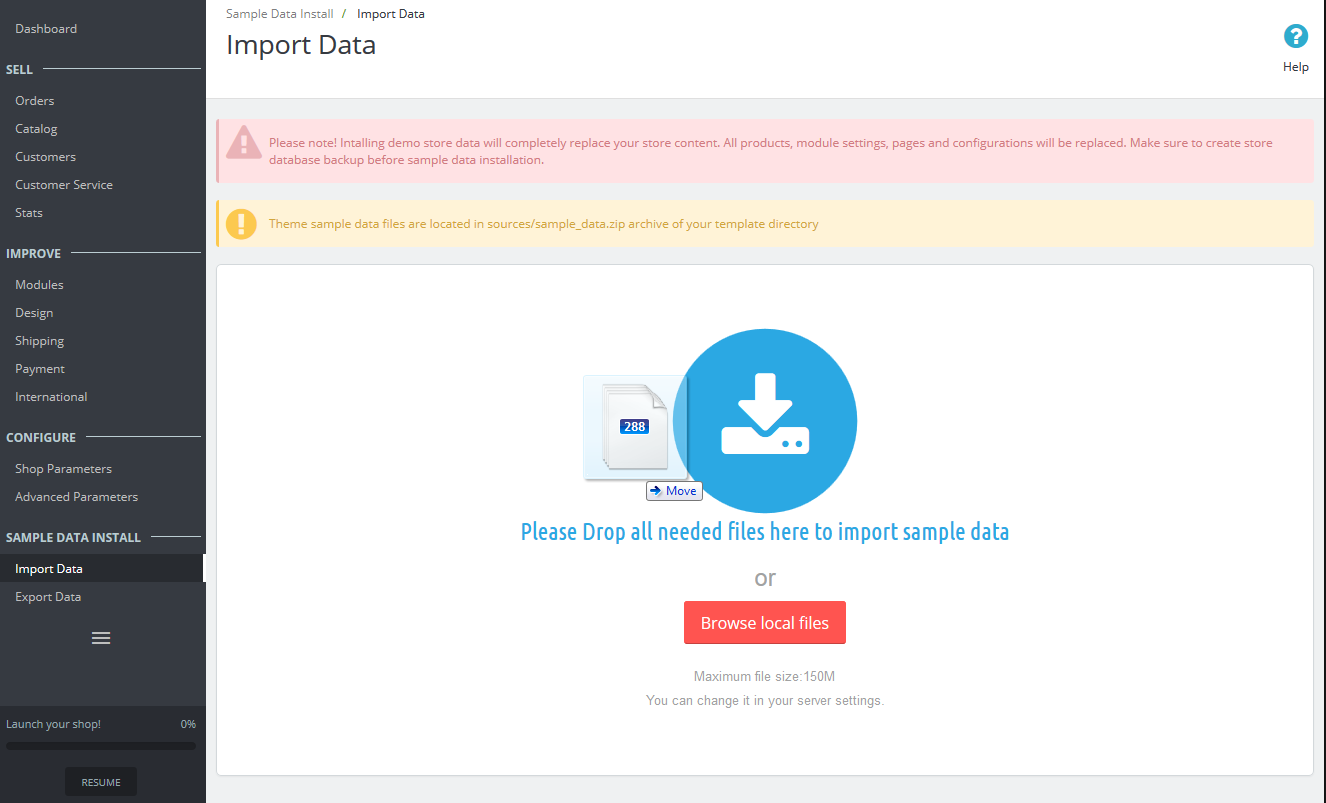
-
You will see the pop-up window offering different types of sample data installation. By default, it's set to 'Load all content' type (1). This means that all sample data will be imported to your store. If that's what you need, click the 'Confirm' button.

If you do not need to install all sample data, uncheck 'Load all content' (1), choose from the required options below by checking options the same way (2) and confirm your choice (3).

-
Wait until the files are uploaded.
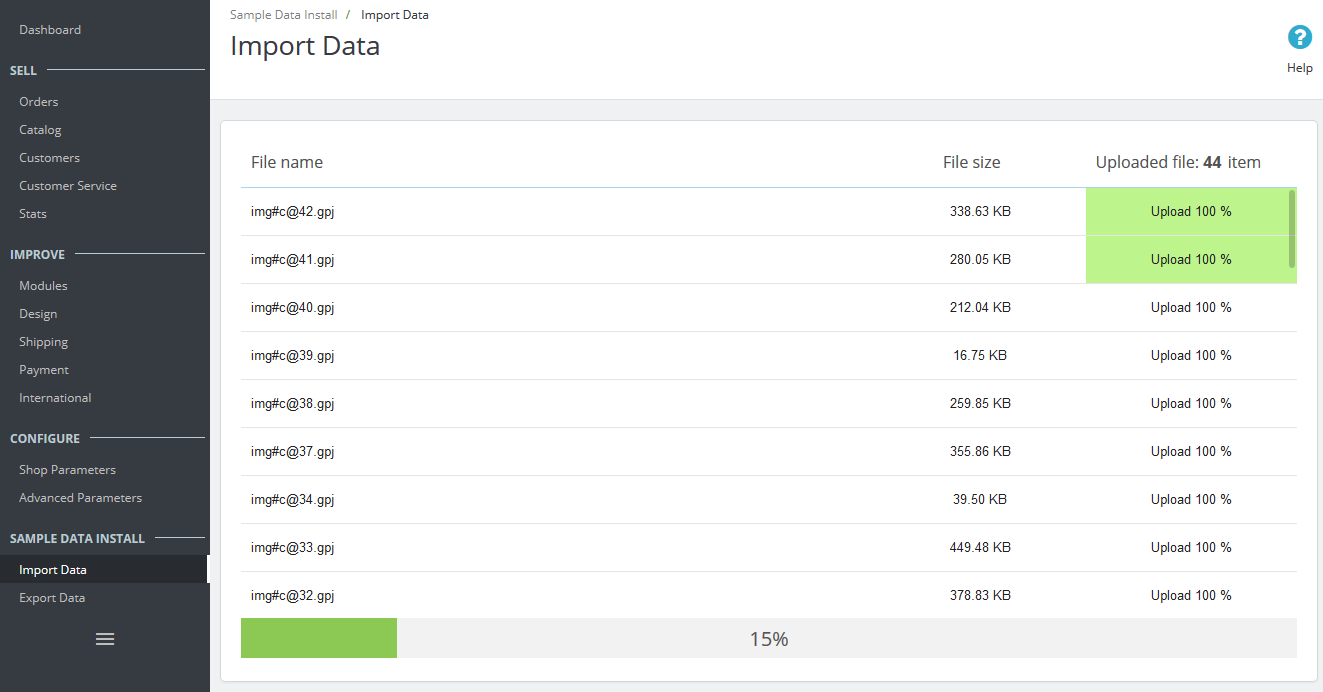
-
Then click "Continue Install" button.

-
Then Sample data installer will automatically configure your store and other modules. This can take several minutes.
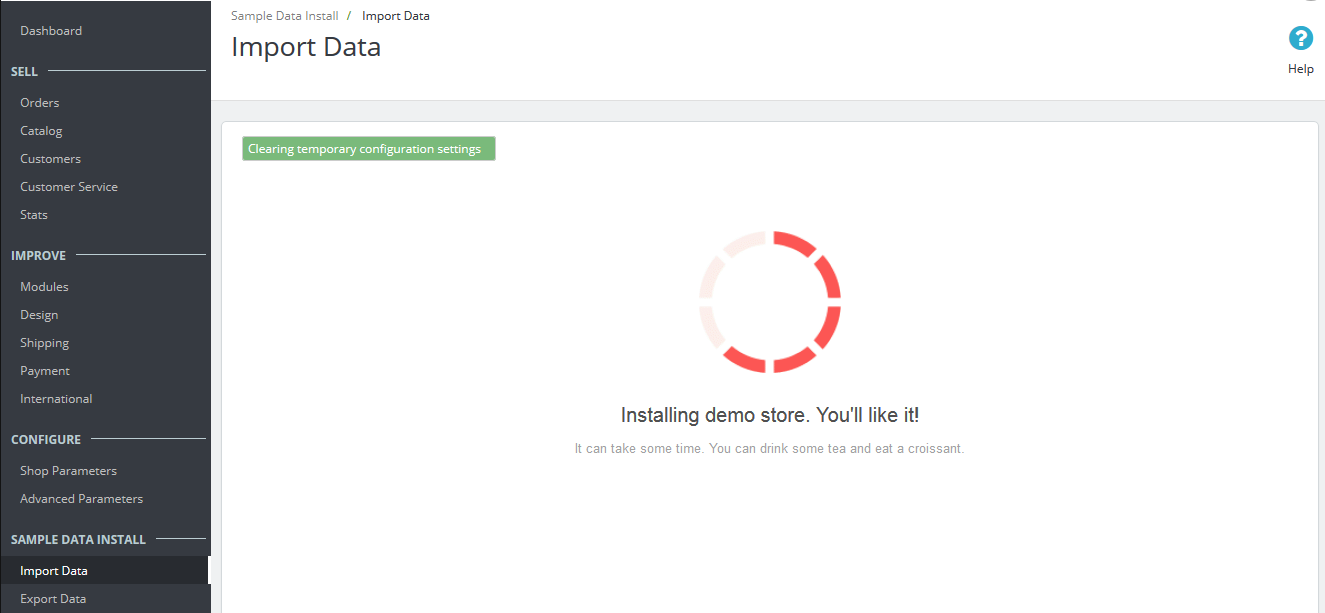
-
When sample data is installed successfully, you need to perform the last step - regenerate images.
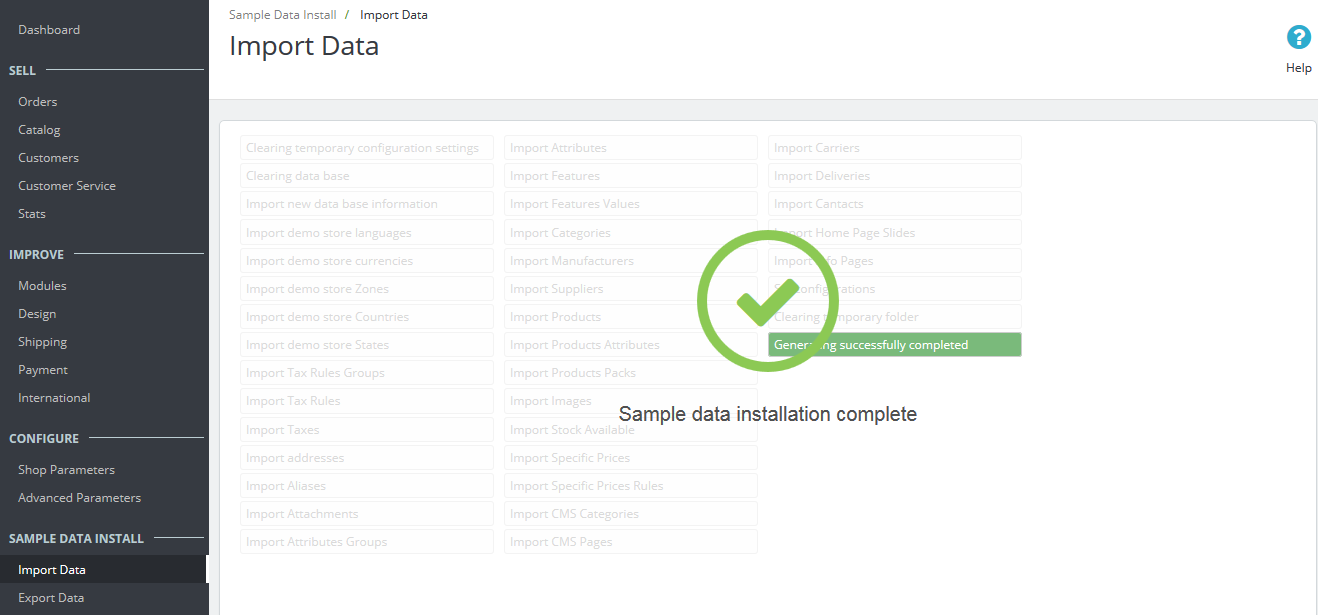
-
Click "Go To Regenerate Page" button at the bottom of the page.

-
To regenerate images click "Regenerate thumbnails" button.
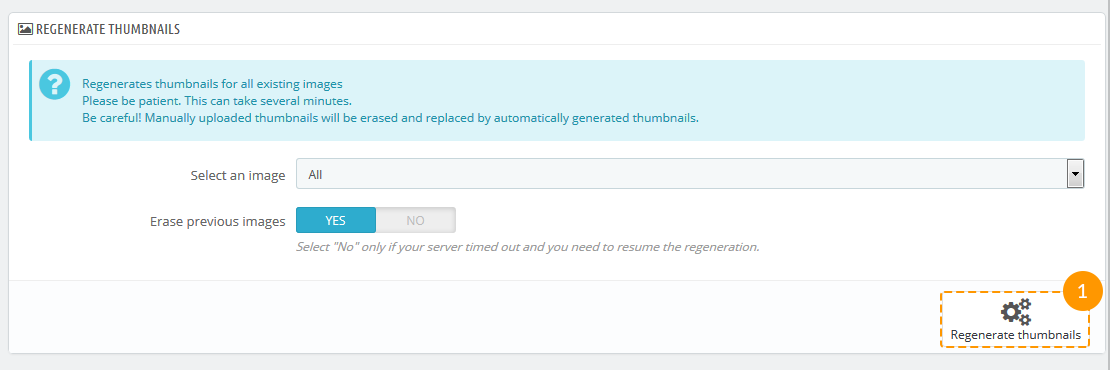
If you have your own content, select only Modules during sample data installation so your content stays and only theme modules demo content is installed:
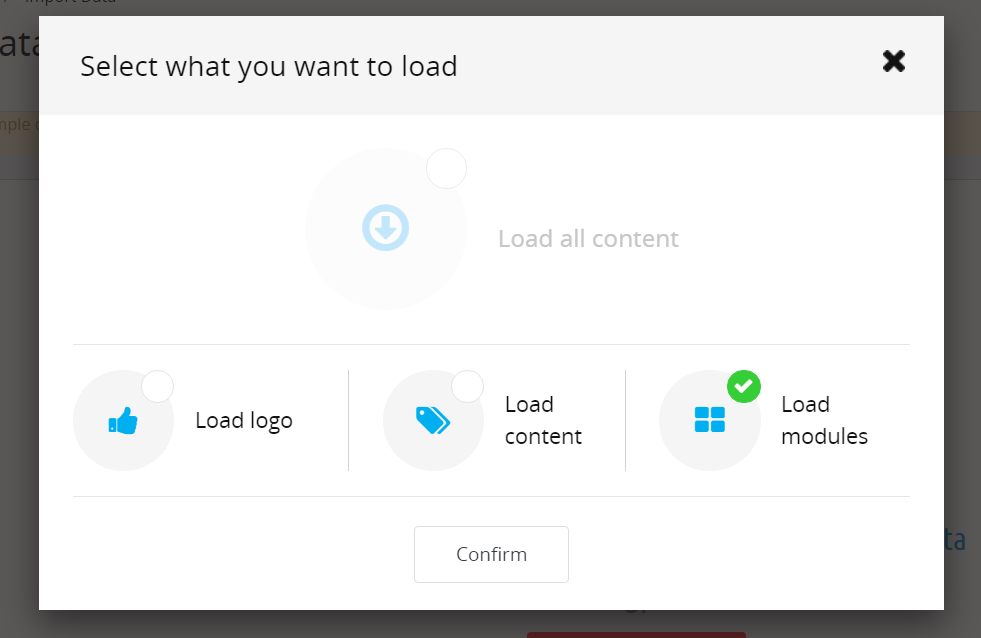
Congratulations, your demo store is installed.
Installation of the template with sample data via FTP
If you don't want to spend your time installing the template, don't hesitate to order installation service using our live-chat.
To make your PrestaShop store appear the same as template live demo, you need to install sample data. It will contain all demo products, categories, modules and store settings.
Please do not use the sample data for your running website! This will replace all your store products and store settings.
Before proceeding to sample data import, you should check the following:
- Make sure your database prefix is ps_ for sample data to apply to the site You can check it in Advanced Parameters -> Information.
- Your server settings should meet Prestashop requirements, especially max_execution_time should be set to at least 300 on the server.
- PHP version should be 7.2 for the best performance. You can find all the recommended settings here.
- In Advanced Parameters > Performance set Debug mode to No.
You can install sample data via FTP with ease saving your time. You just need to follow the instruction from the step 1 (Theme import) of this manual.
Please, do the following:
-
Open the template package.
-
Go to the /theme/sample_data/ folder.
-
Copy ALL the sample data files and paste them to the themeXXXX/modules/sampledatainstall/input/ folder in your PrestaShop root directory.
-
Now, in your PrestaShop admin panel menu click "Import Data" item.
-
Wait until the Sample Data Installer configures your store and other modules.
-
Sample data is installed successfully!
-
The last step is the images regeneration. Click "Go To Regenerate Page" button at the bottom of the page.
-
To regenerate images click "Regenerate thumbnails" button.
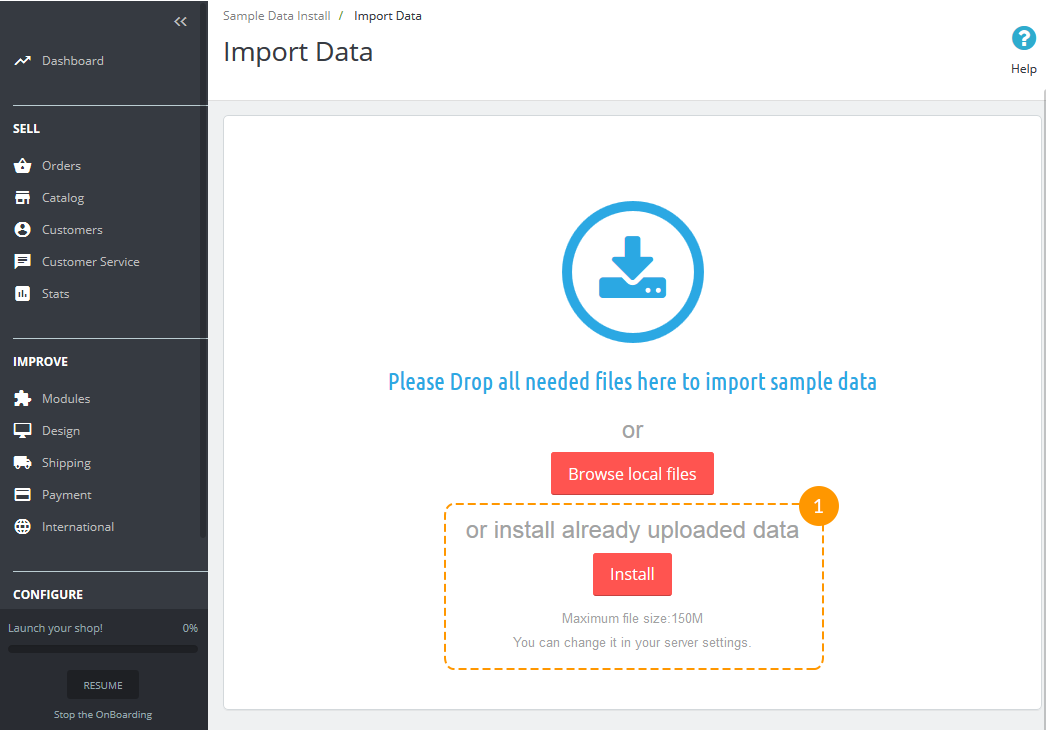
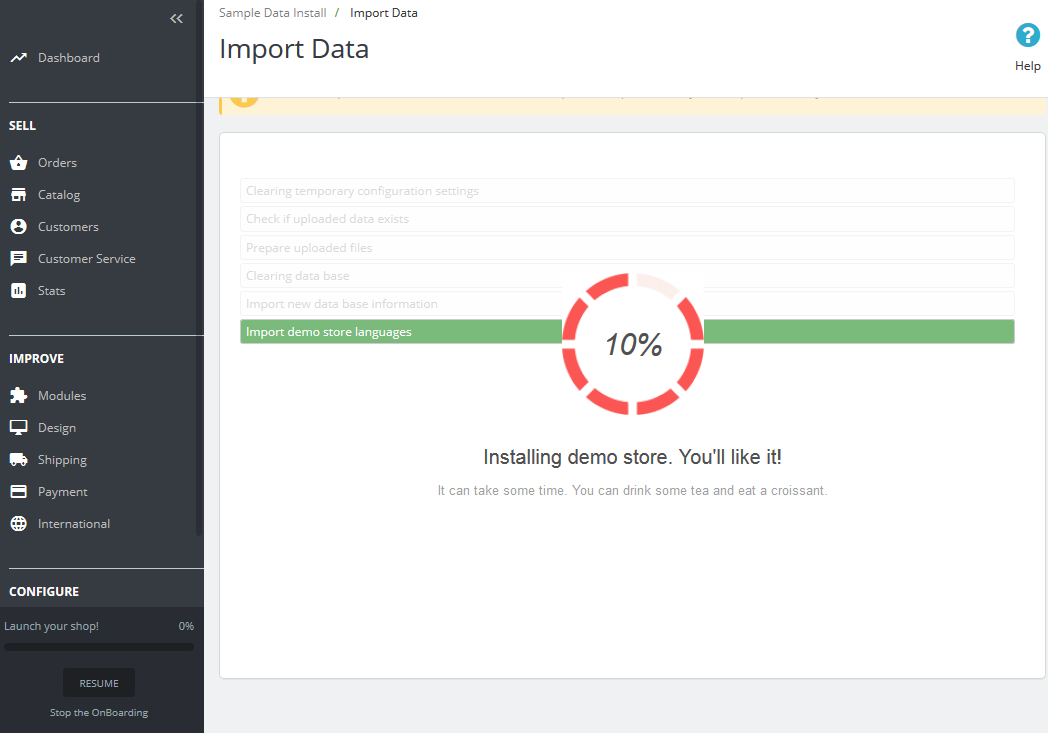


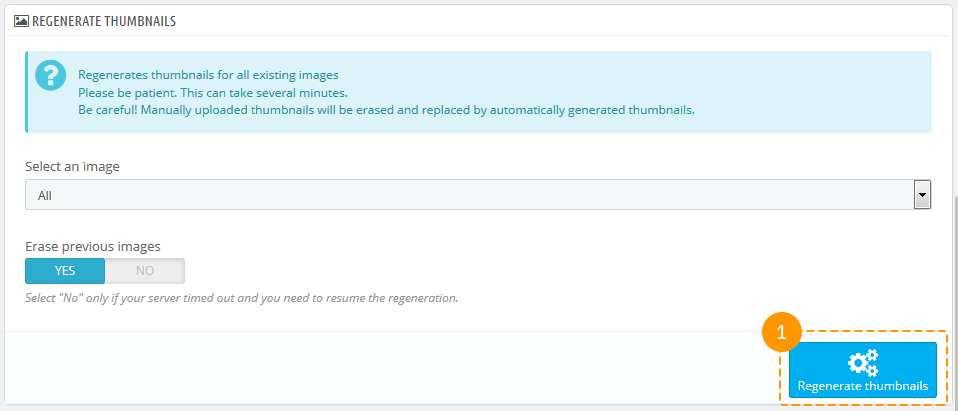
Congratulations, your demo store is installed.
Manual template installation with sample data
If you don't want to spend your time installing the template, don't hesitate to order installation service using our live-chat.
To make your PrestaShop store appear the same as template live demo, you need to install sample data. It will contain all demo products, categories, modules and store settings.
Please do not use the sample data for your running website! This will replace all your store products and store settings.
Before proceeding to sample data import, you should check the following:
- Make sure your database prefix is ps_ for sample data to apply to the site You can check it in Advanced Parameters -> Information.
- Your server settings should meet Prestashop requirements, especially max_execution_time should be set to at least 300 on the server.
- PHP version should be 7.2 for the best performance. You can find all the recommended settings here.
- In Advanced Parameters > Performance set Debug mode to No.
Uploading template files
To upload the template to your server:
- Open the template package.
- Then go to the /theme/manual_install/ folder.
- Upload /img/, /modules/ and /themes/ folders to PrestaShop root directory.
You can check the detailed video tutorial on how to upload files to server using FTP manager and how to upload files to a server using cPanel (WebHost Manager, WHM).
Installing Sample data
Sample data is provided as an .SQL file. It is located in the theme/manual_install/ of the template package and is called dump.sql.
The dump.sql file can be installed using the phpMyAdmin tool or some other database management tool in your hosting control panel.
Before you proceed, please back up your database.
Please make sure your version of PrestaShop engine matches the template requirements. Otherwise, the database will be damaged.
When you are done with installing the dump.sql file, you will need to activate the template.
From the PrestaShop admin panel, go to Design > Theme & Logo, choose your template in the Themes section and click 'Save' button.
Adding languages to online store
Once the multi-language template is installed, you will be able to add all languages provided with it (English, French, Spanish, German, Russian) to the online store platform. It can be done this way:
Go to 'International > Translations' in the admin panel, find 'ADD/UPDATE A LANGUAGE' and add languages by choosing them from the drop-down menu (1) and clicking the 'Add or update a language' button (2) .

If you do not want to have some languages, you can delete them (2) or turn them off (1) in the 'International > Localization > tab Languages' menu.

